Ford Autonomous
Future of Interior Design in Autonomous Cars


Forty Years of Fiesta’s Evolution — What’s Next?

Avenues for Design Research.
Past Influences, Events & Activities.
> Ford, a global automotive and mobility company, needed a new design vision for their next generation Ford Fiesta in new global markets — highlighting the future of interior design in Ford’s autonomous vehicles both visually and technologically. This required a shift and rethink of Ford Fiesta; its user experience, identity, and positioning to suit the 21st century landscape and user needs — a shift towards technology, innovative engineering and technical sophistication.
> To address this need and to celebrate 40-years of its Fiesta model (the UK’s best-selling car of all time), this research project explored and developed solutions that reflect new design language that is future-facing, anti-brand and re-imagines the notions of quality, materiality and functionality was explored.
> Taking into consideration the changing demographics, context, scenario and the growing need for personalisation, this research also explored Ford’s future-consumer needs — proposing exciting, energetic, superior, compelling, and distinctive designs that is not evolutionary, but revolutionary!
 This research project is based on the Inductive & Intuitive model to enable a co-creating process that involves the designer to learn alongside the client to develop solutions suited for client as well as end-user needs.
This research project is based on the Inductive & Intuitive model to enable a co-creating process that involves the designer to learn alongside the client to develop solutions suited for client as well as end-user needs.Shared views of the designer and the industry partner helped with envisioning the future based on mutual insights of the world and key understanding of the subject matter.
> Using the Inductive & Intuitive model, three proposals originated from this research: Dies Nox (Vincenzo Damato and Meryl Le Fleur), Nomad (Shpend Pashtriku, Onur Celik and Thomas Christie), and Iris (Erdi Bal, Cansu Bal and Seniz Veli).
Key words: Driverless cars;
Future interior design;
Autonomous Transport

Proposal 1: Dies Knox.
> Dies Knox is developed for a world where everything is connected. It forms an interior space that is memorable and helps us bond through experiencing the places around us from a unique perspective.
Dies Knox proposes a flexible multi-functional interior. The new form of the internal space of the car has been greatly inspired by the combination of nature and architecture; the use of space, fluidity and choice of material are some of the key elements for the vision — a vehicle useful for 4 passengers with variable space!

Proposal 1: Dies Knox (interior view & integrated technology).

Proposal 1: Dies Knox (elevation).

Proposal 1: Dies Knox (section).
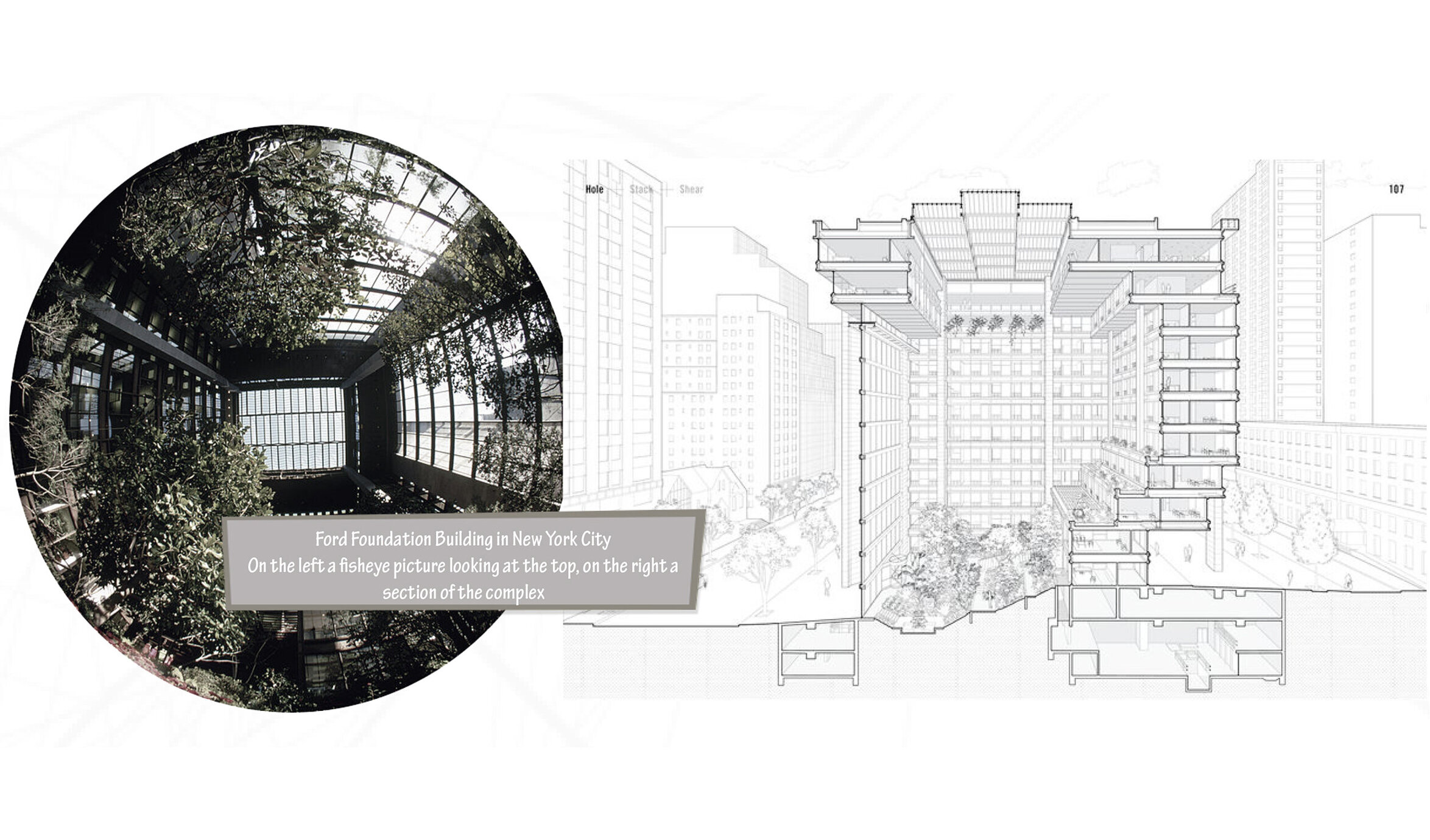
Proposal 1: Dies Knox (concept reference).

Proposal 1: Dies Knox (structure reference).
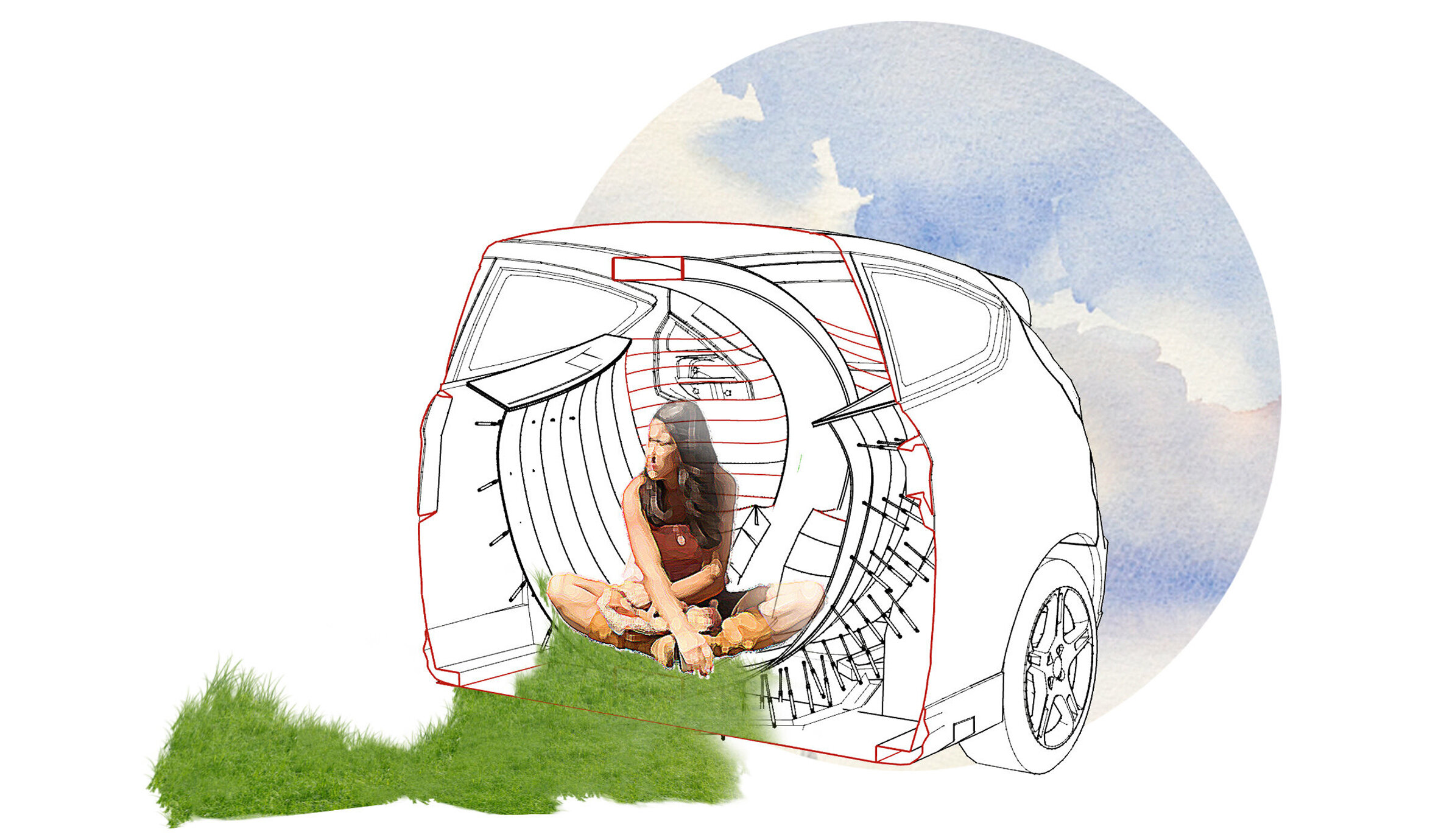
Proposal 1: Dies Knox (cross section).

Proposal 1: Dies Knox (market research).

Proposal 1: Dies Knox (development).

Proposal 1: Dies Knox (features).
 Proposal 1: Dies Knox (modes & experiences).
Proposal 1: Dies Knox (modes & experiences).
Proposal 1: Dies Knox (drive mode).
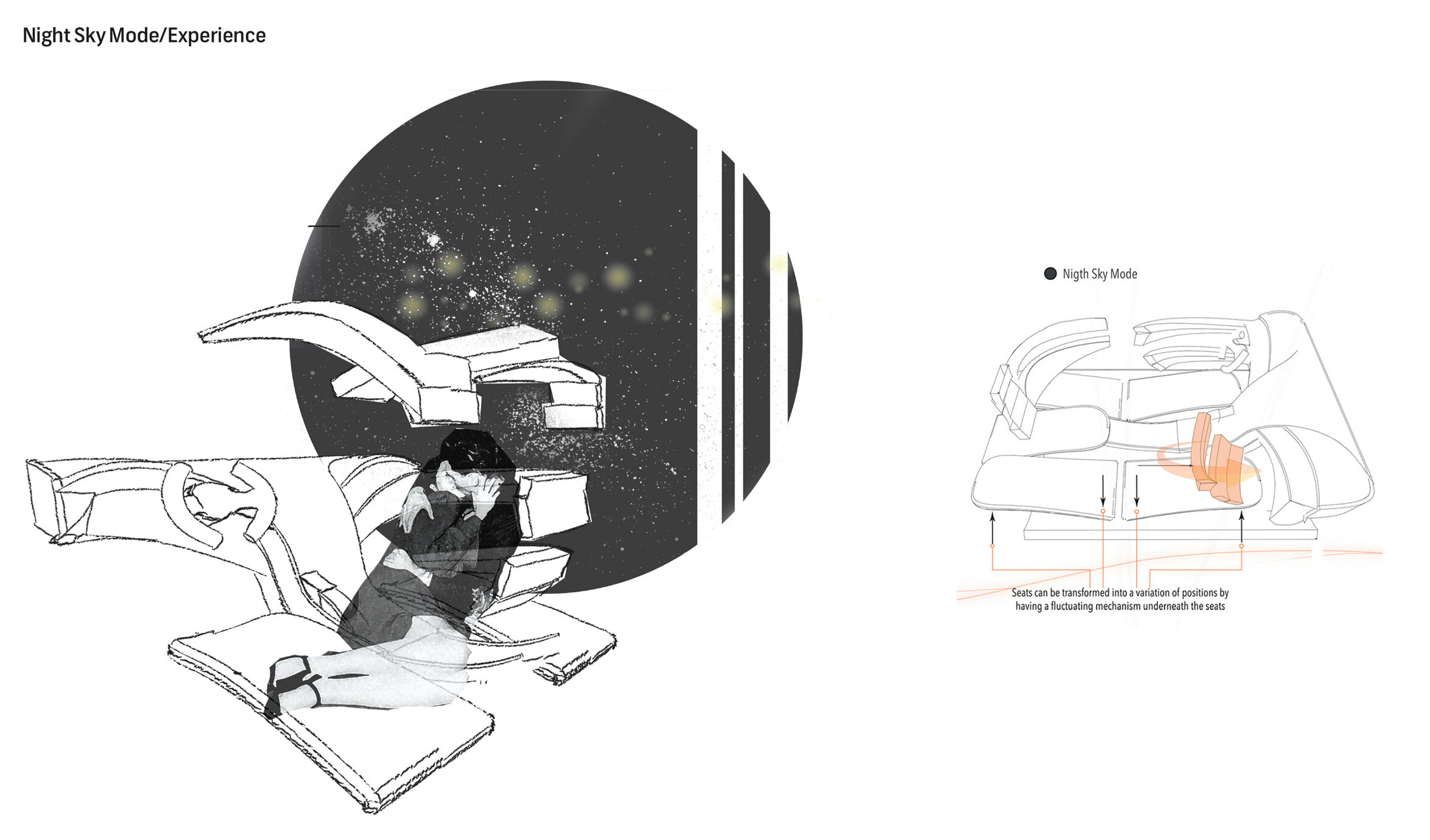
Proposal 1: Dies Knox (night mode).
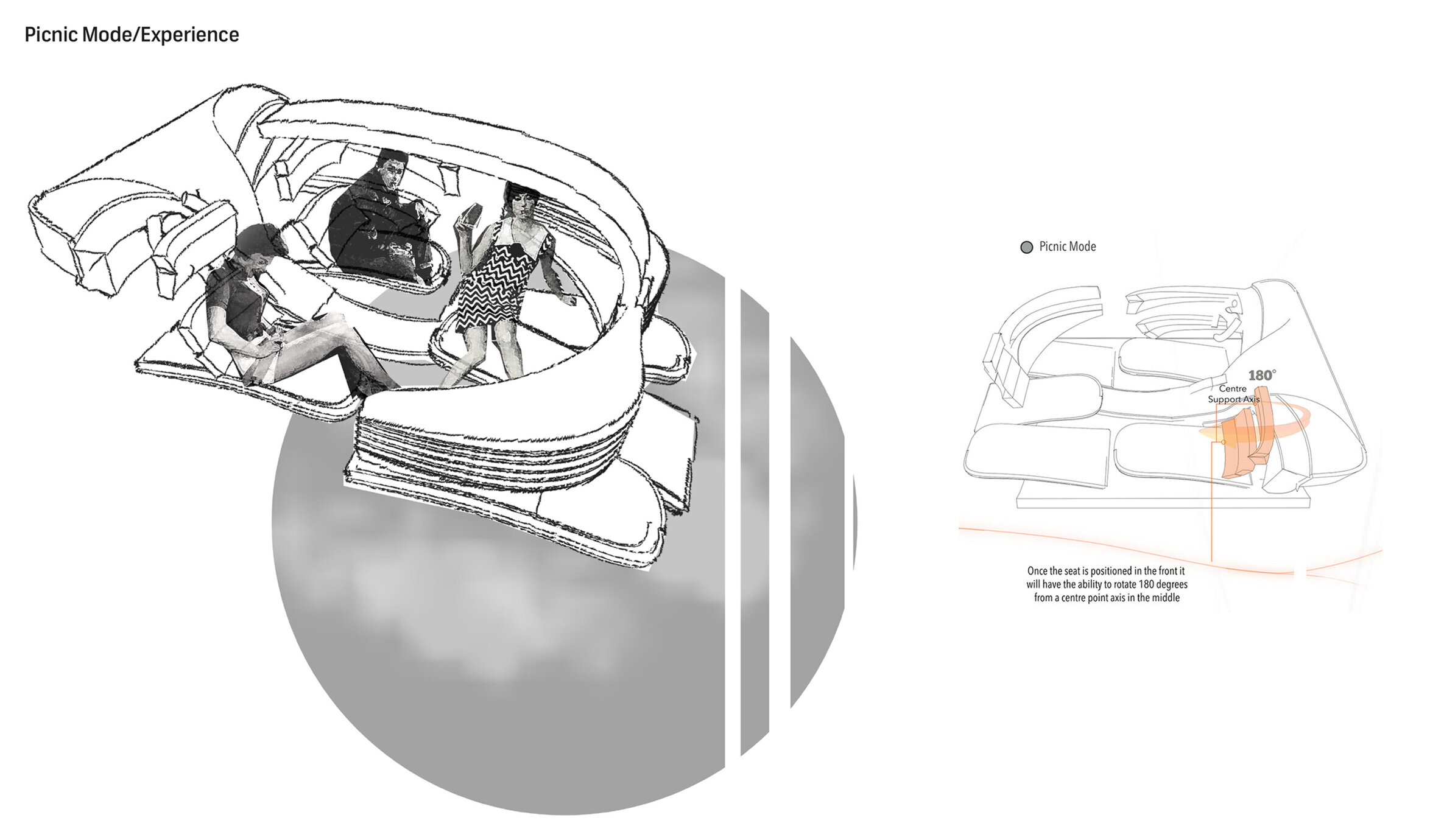
Proposal 1: Dies Knox (picnic mode).
 Proposal 1: Dies Knox (interior interactions).
Proposal 1: Dies Knox (interior interactions).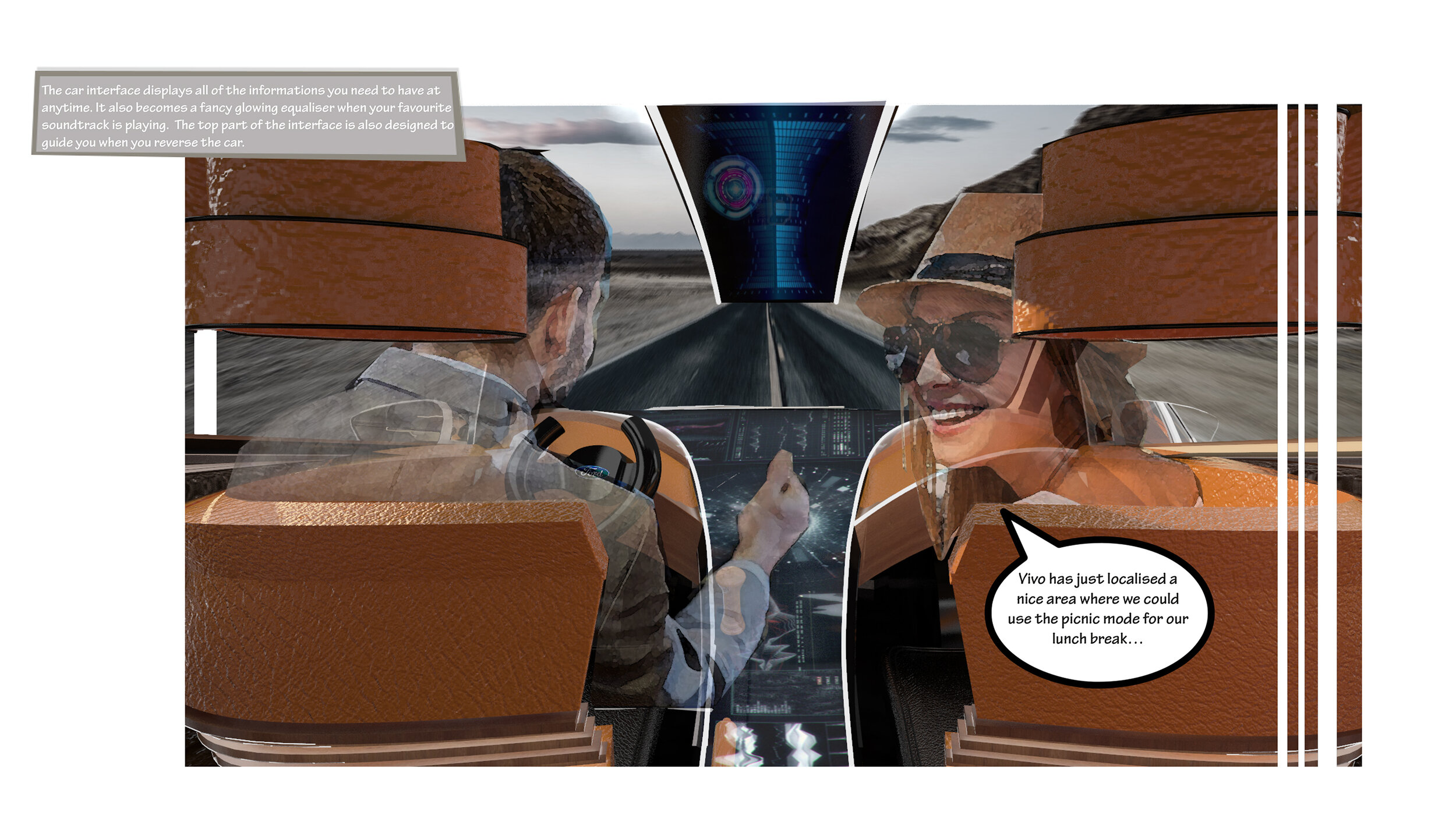 Proposal 1: Dies Knox (interior interactions).
Proposal 1: Dies Knox (interior interactions).
Proposal 1: Dies Knox (interior interactions).
 Proposal 1: Dies Knox (interior materials).
Proposal 1: Dies Knox (interior materials). Proposal 1: Dies Knox (scale model).
Proposal 1: Dies Knox (scale model).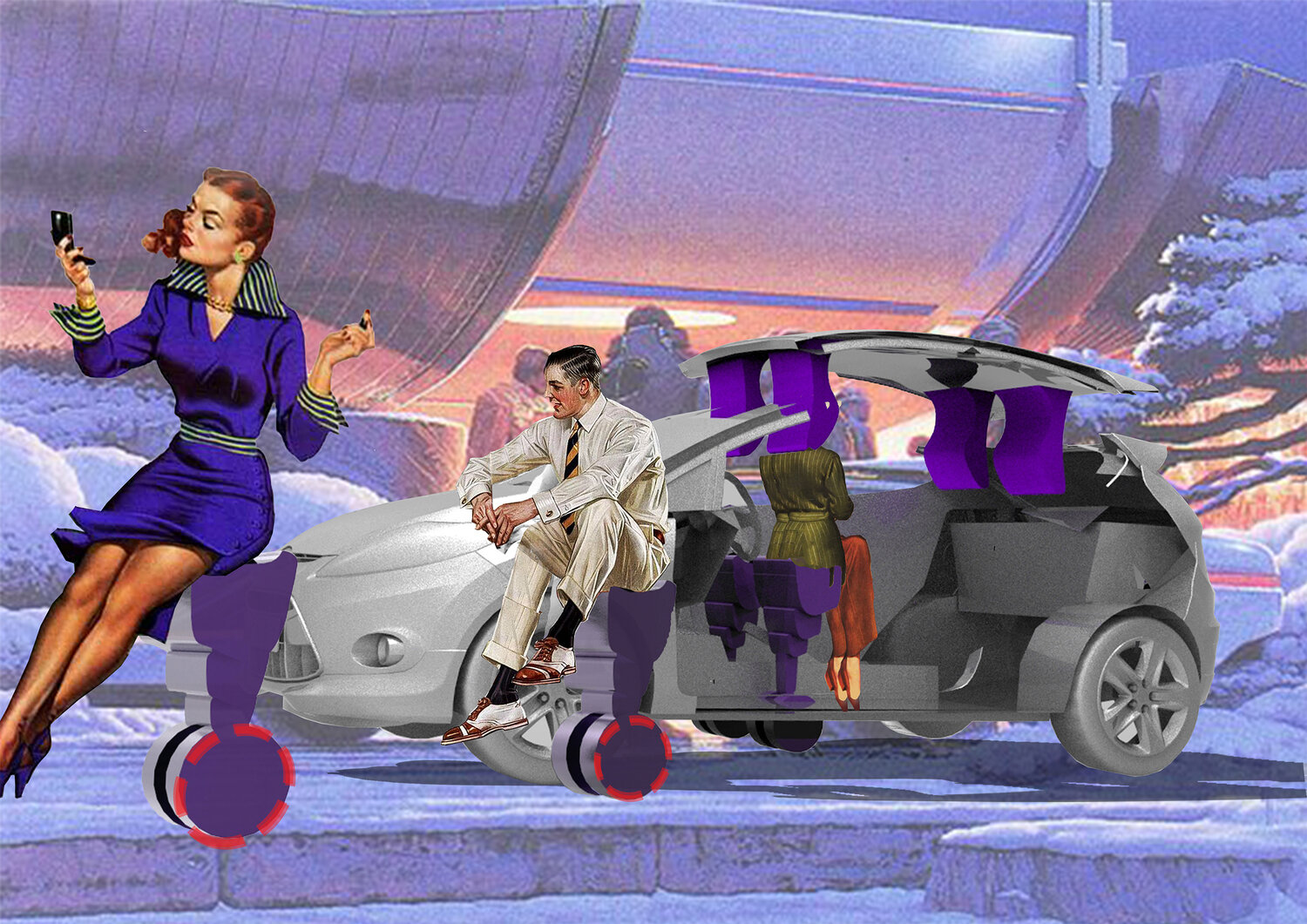
Proposal 2: Iris.
> Iris is based on the profile of Iris Apfel, a flamboyant fashionista, who despite being a stylish lady at 95 years of age, sees herself as a teenager. The age gap between how she feels and how long she has been strutting through life is why we think Iris is the future market segment.
Iris proposes a new type of Fiesta by reimagining the future users knowing that eventually humans will live up to 100 years of age by 2080, which suggests that those who retire at the age of 67 have another 33 years to essentially ‘relive’ their life.

Proposal 2: Iris (features).

Proposal 2: Iris (mobility).
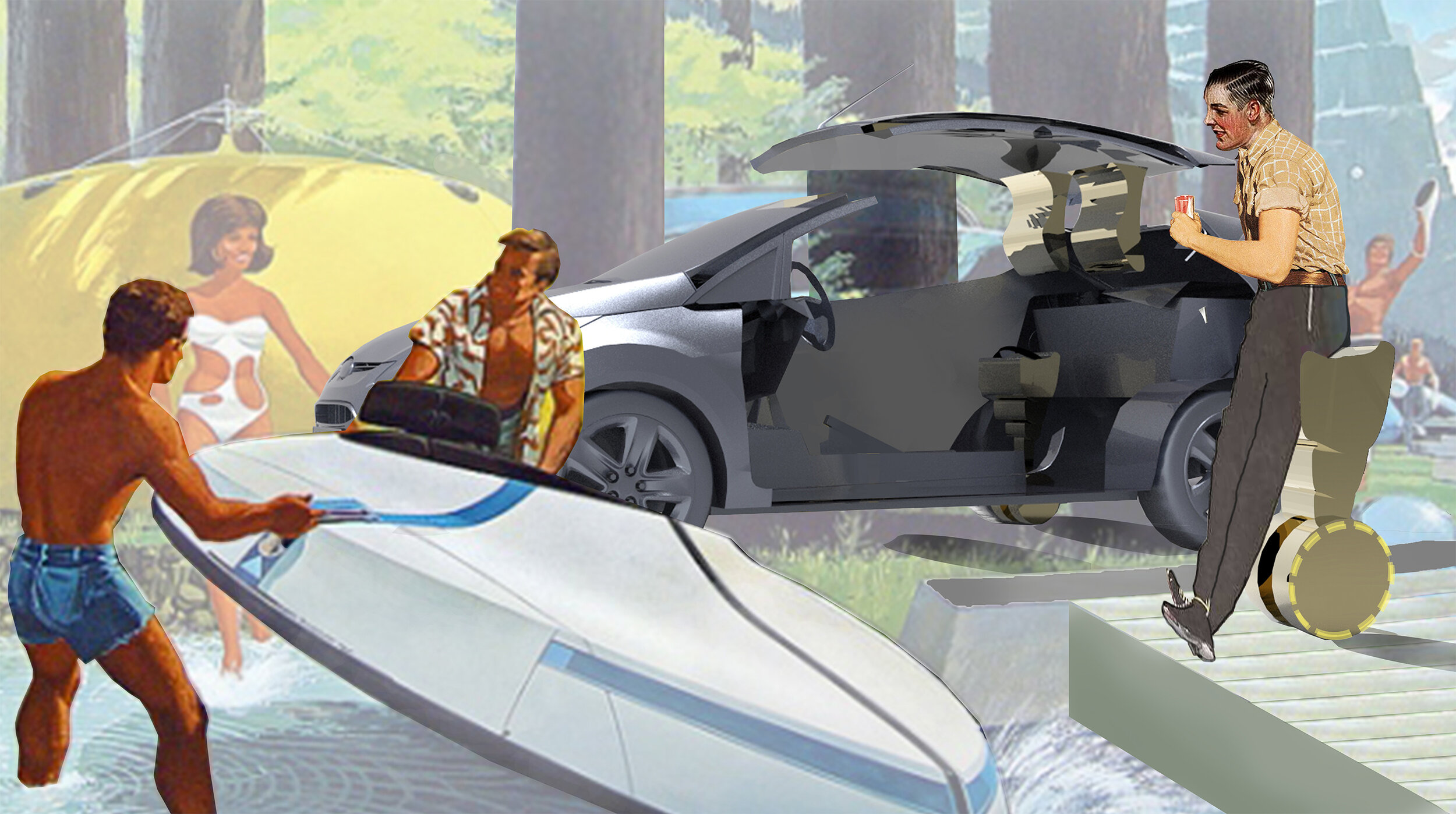
Proposal 2: Iris (activities).

Proposal 2: Iris (persona).
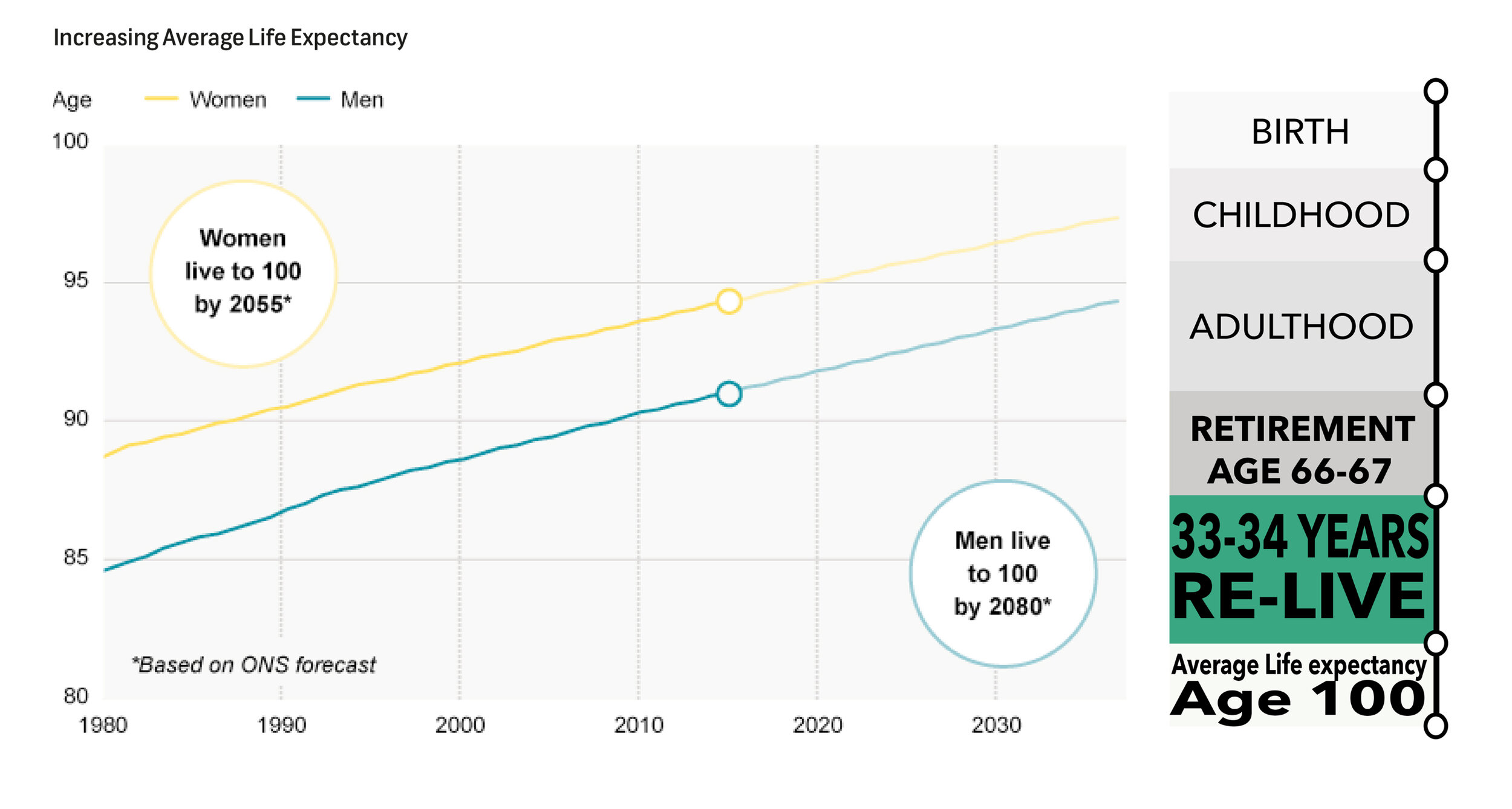
Proposal 2: Iris (demographics).
Proposal 2: Iris (development).

Proposal 2: Iris (adaptive layout & seating).
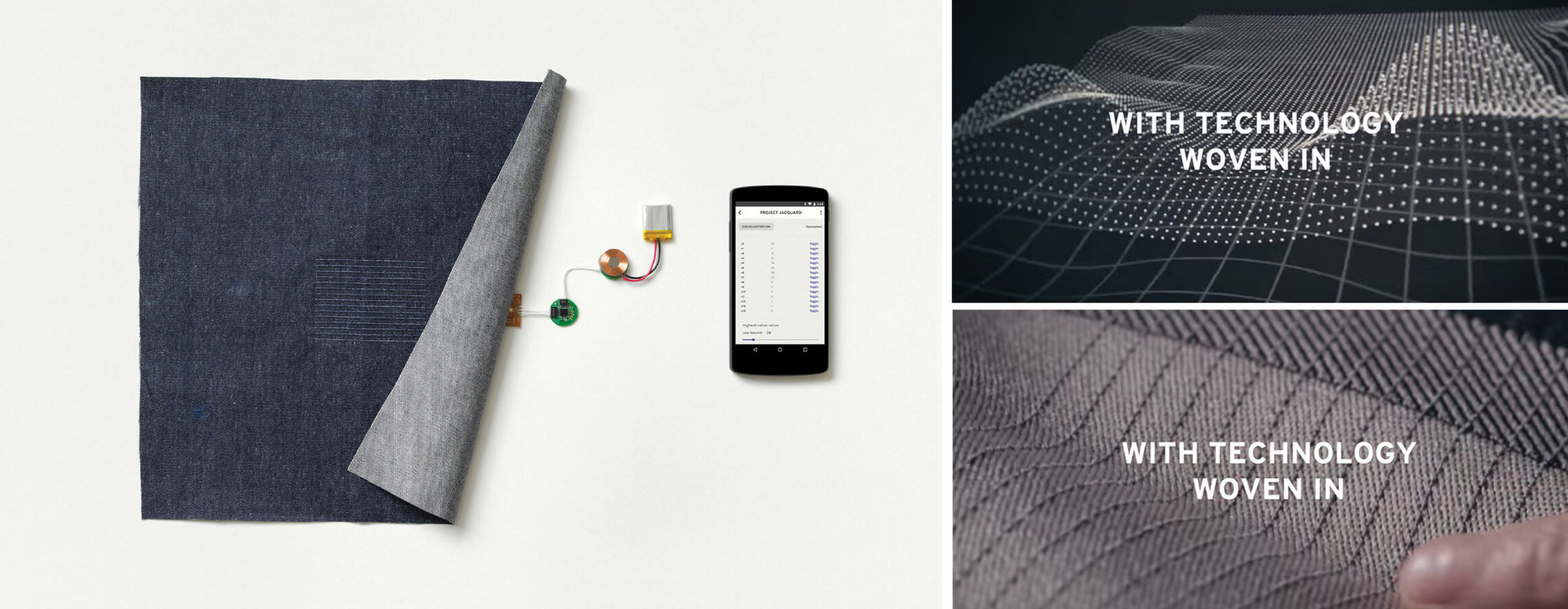
Proposal 2: Iris (materials).
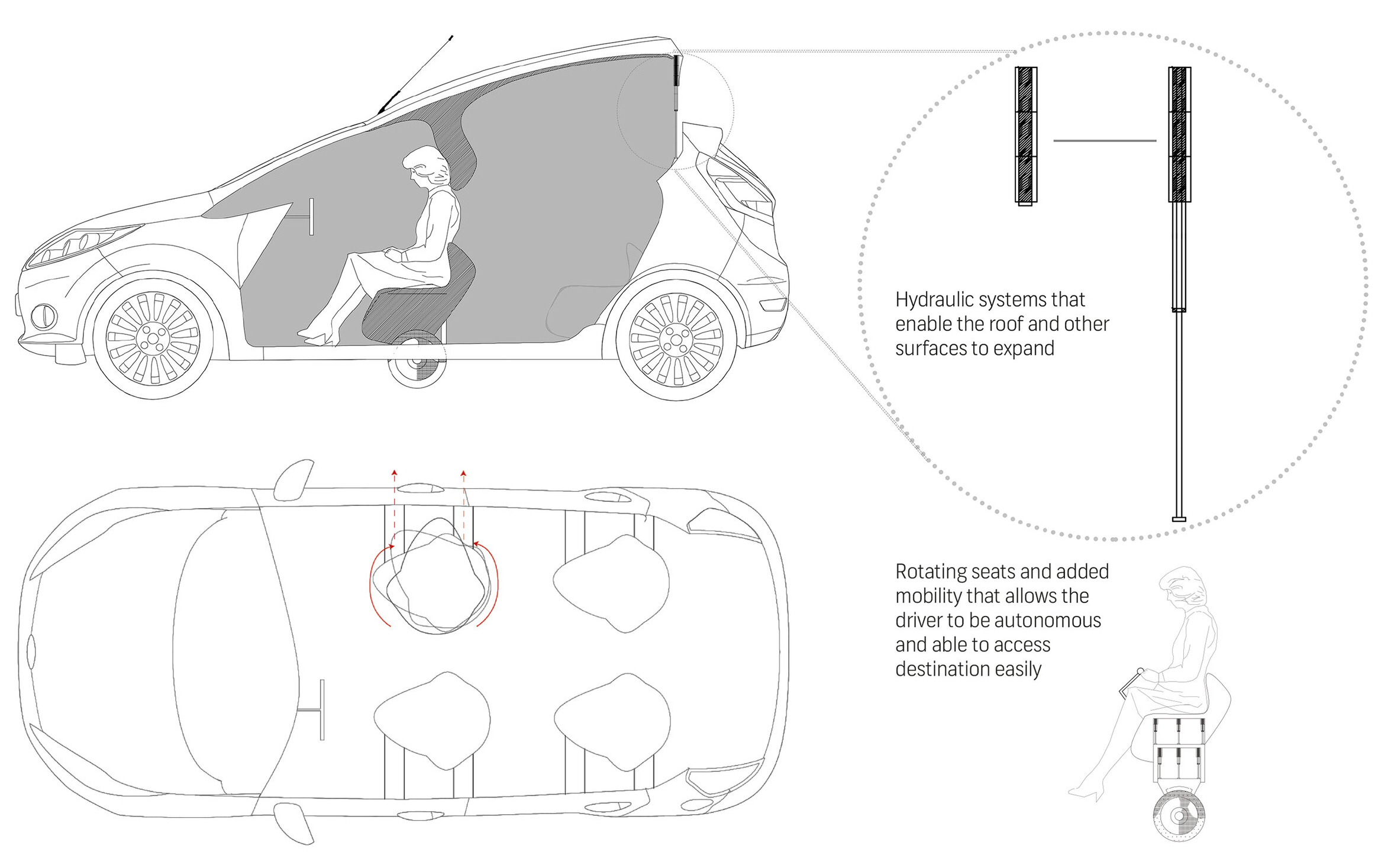
Proposal 2: Iris (added mobility & flexibility).
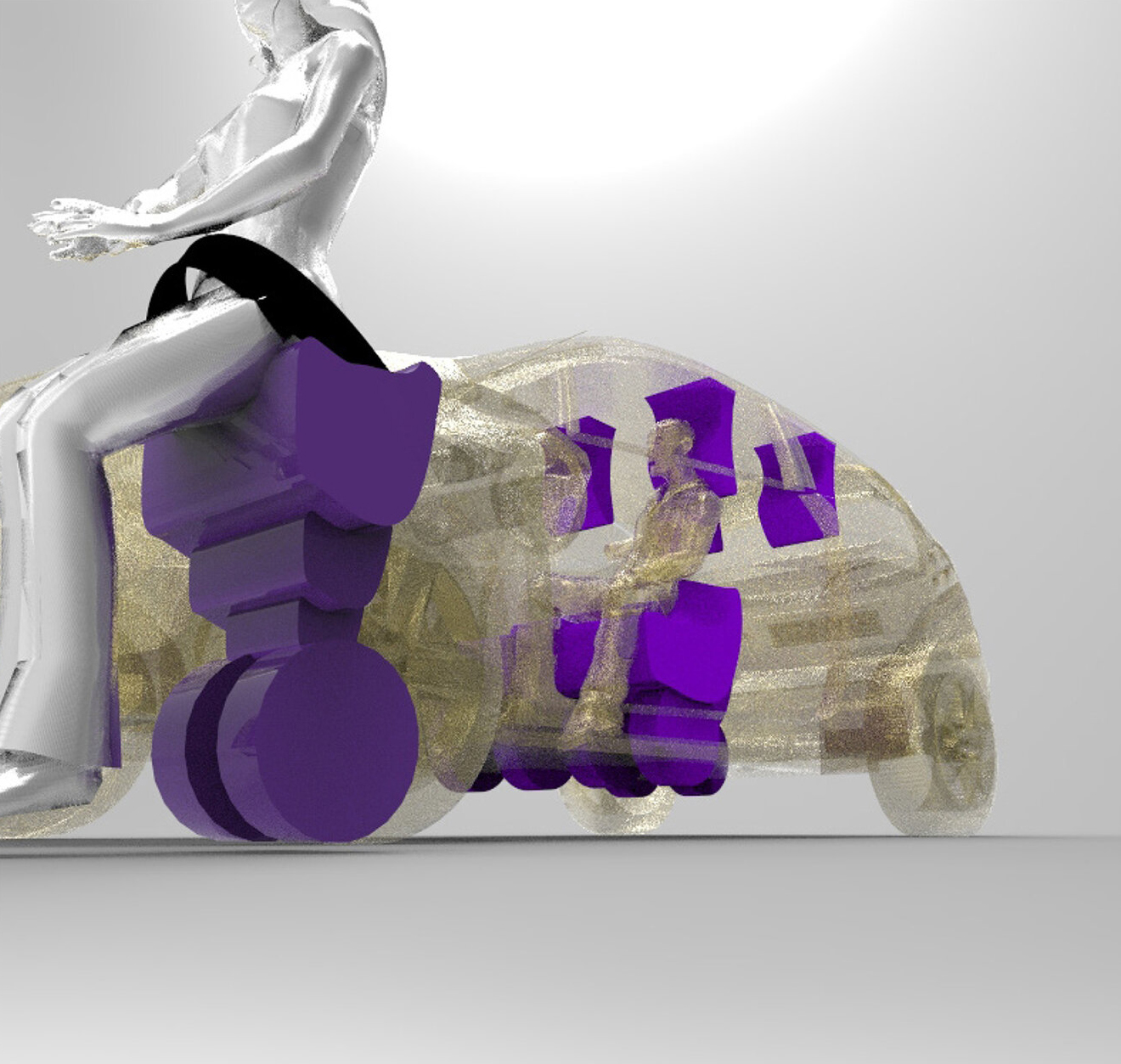
Proposal 2: Iris (portable assisted mobility).
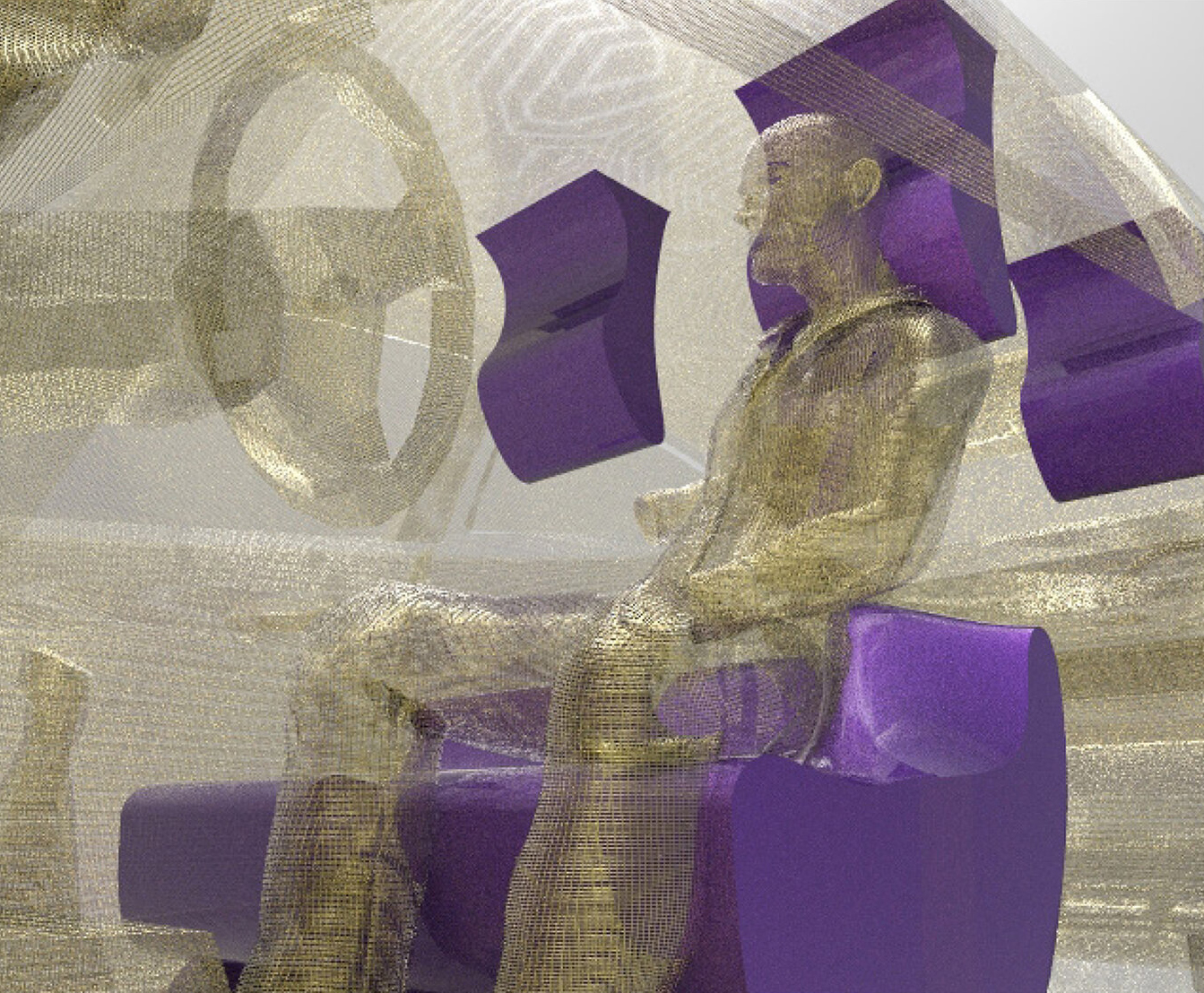
Proposal 2: Iris (morphing seat).

Proposal 2: Iris (adaptive wheel).
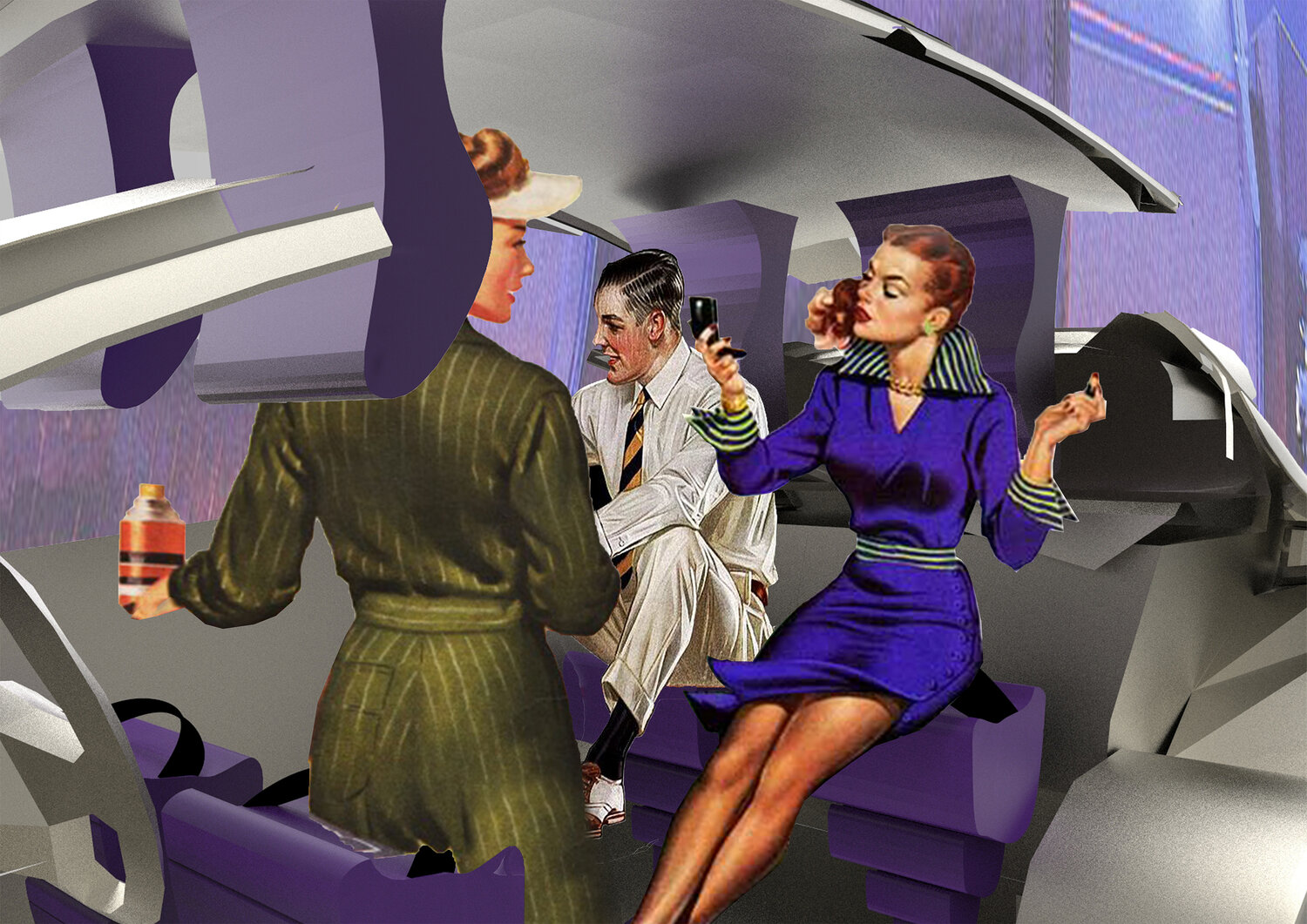
Proposal 2: Iris (interior view).
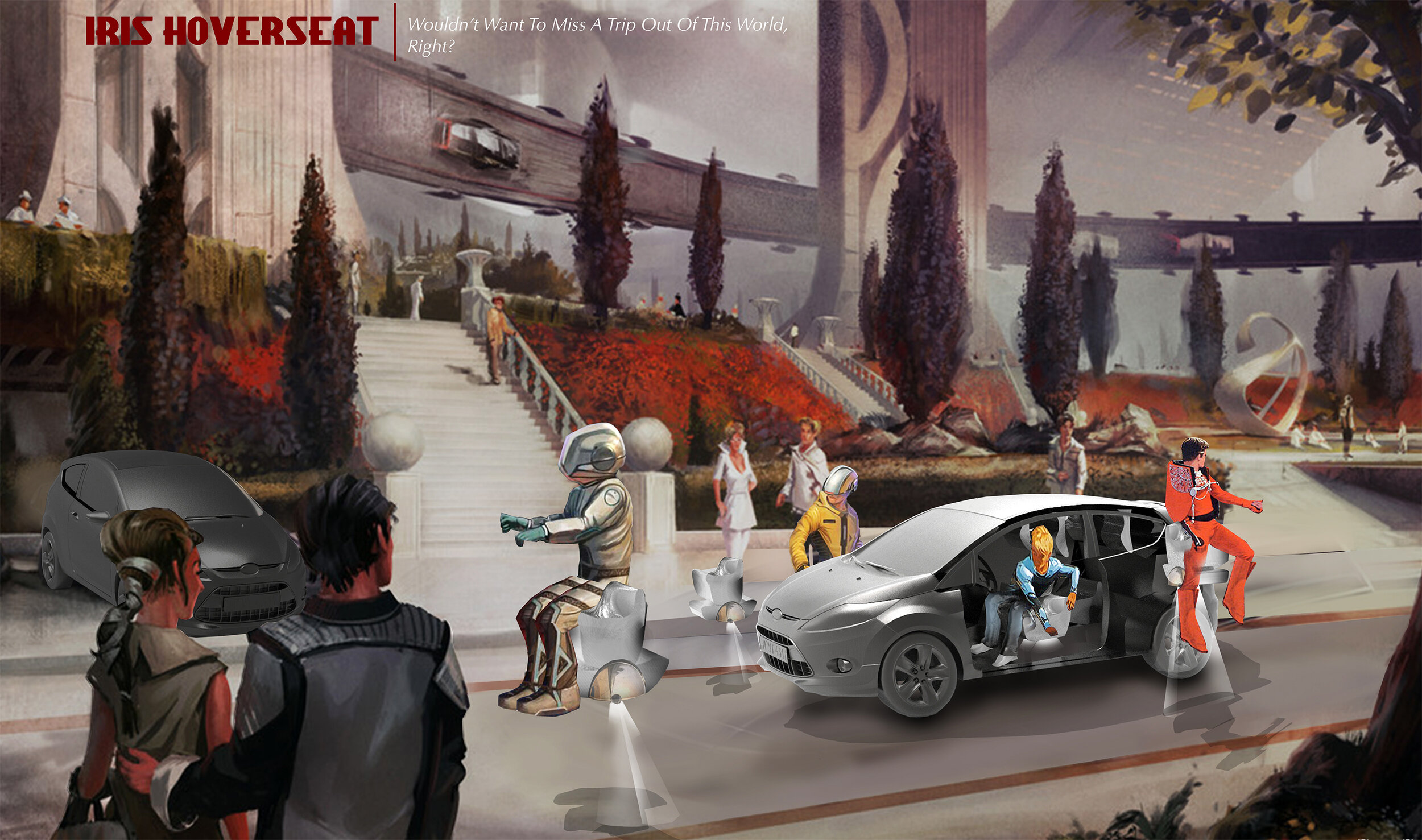
Proposal 2: Iris (context).

Proposal 3: Nomad.
> Nomad is the next generation of ford aiming to curve the notion of a domestic car. It aims to thrive ahead in this technological era tackling unforeseen problems in health to the development of the social aspects within the everyday car.
Nomad proposes a new kind of Fiesta that uses vision and brain technology as a source of recreating the passenger’s memory, sense of space and imagination - allowing the abled as well as the disabled to immerse themselves and others inside an interior that changes in response to individual’s or the group’s mood and mental health conditions.

Proposal 3: Nomad (interior view).
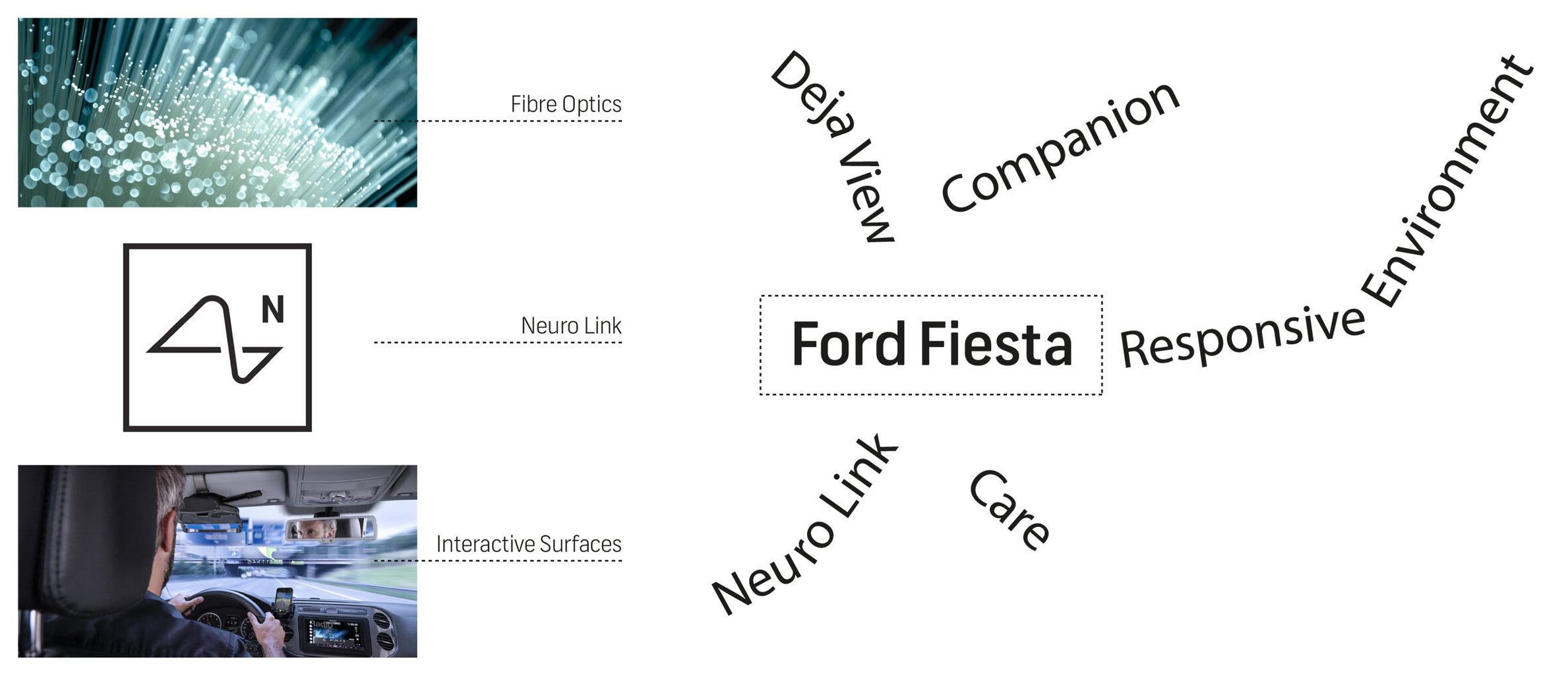
Proposal 3: Nomad (persona).

Proposal 3: Nomad (passenger experience).
Proposal 3: Nomad (design drivers).
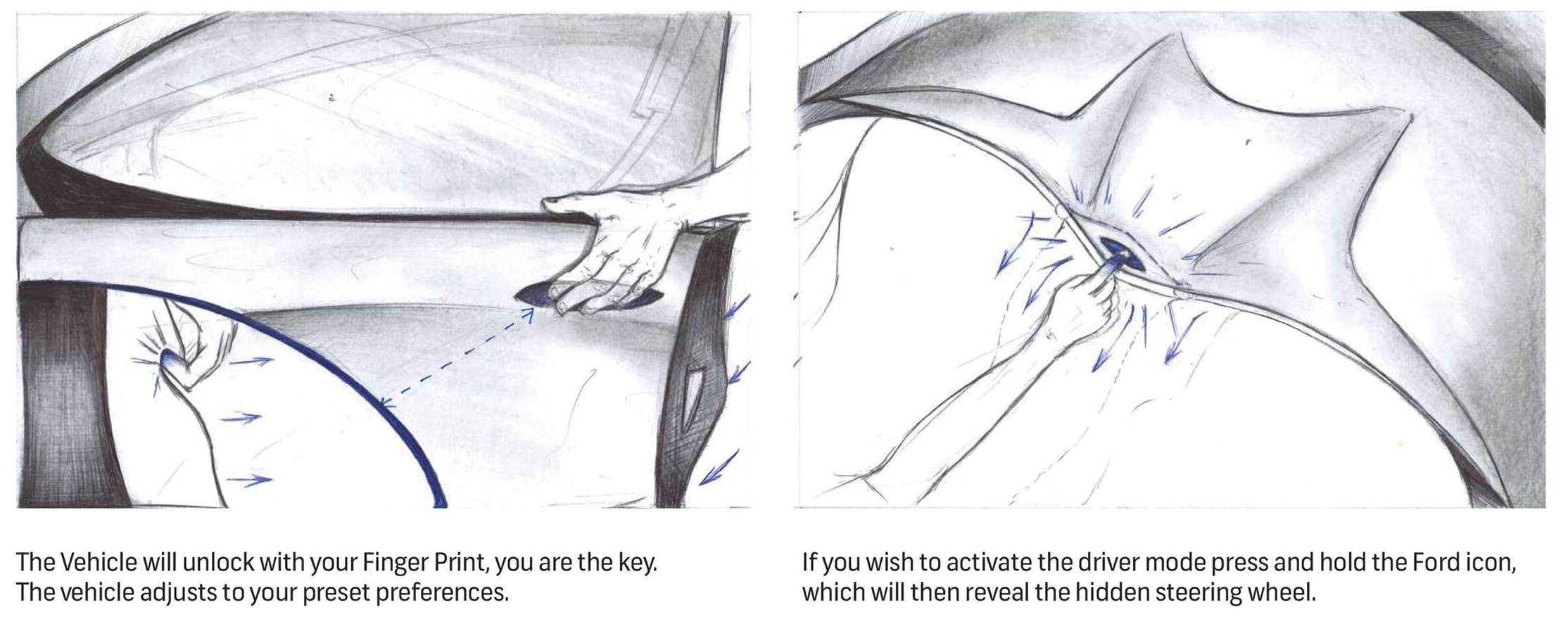
Proposal 3: Nomad (interior interactions).
 Proposal 3: Nomad (user experiences).
Proposal 3: Nomad (user experiences).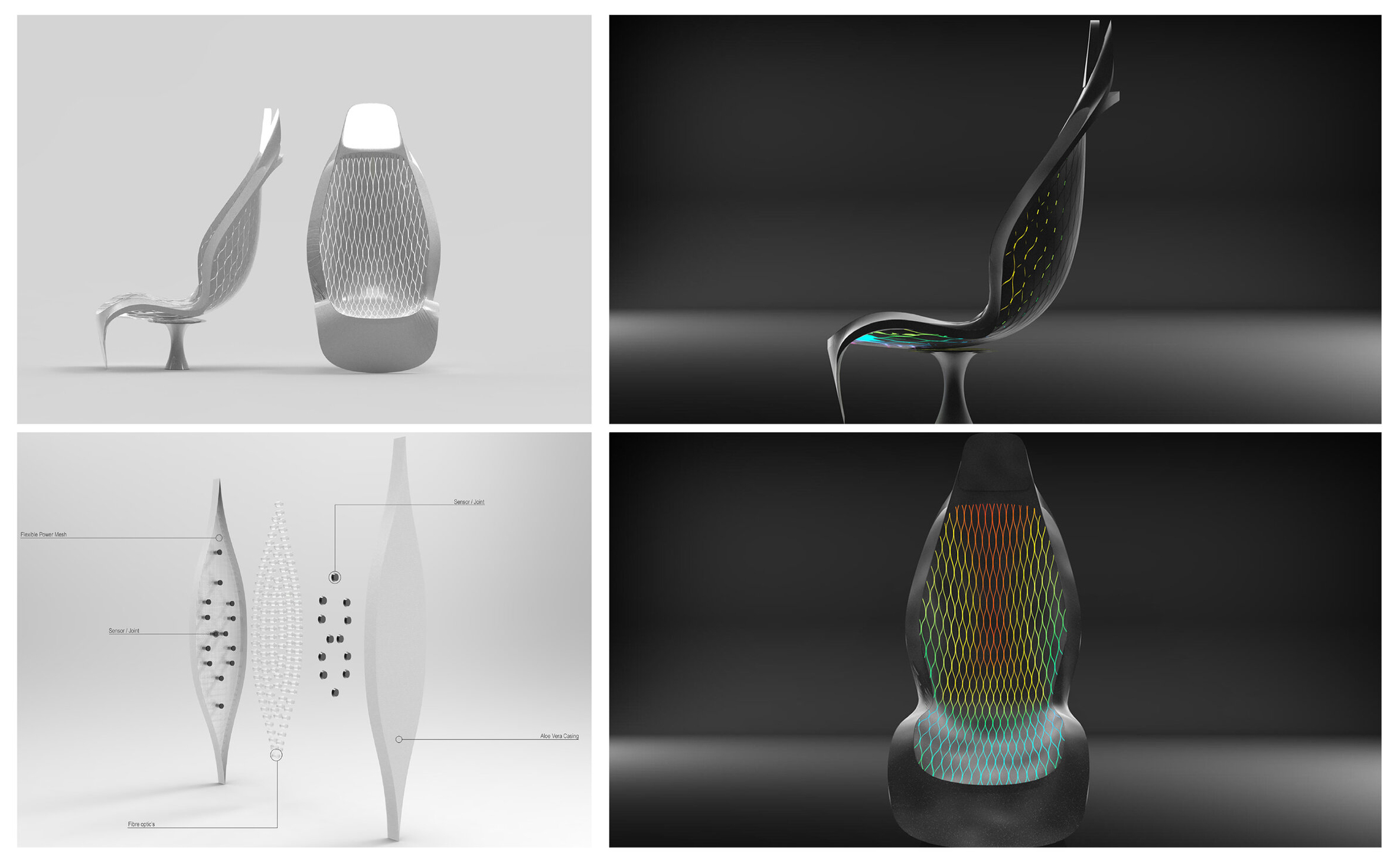 Proposal 3: Nomad (materials).
Proposal 3: Nomad (materials). Proposal 3: Nomad (driver experiences).
Proposal 3: Nomad (driver experiences). Proposal 3: Nomad (driver experiences).
Proposal 3: Nomad (driver experiences).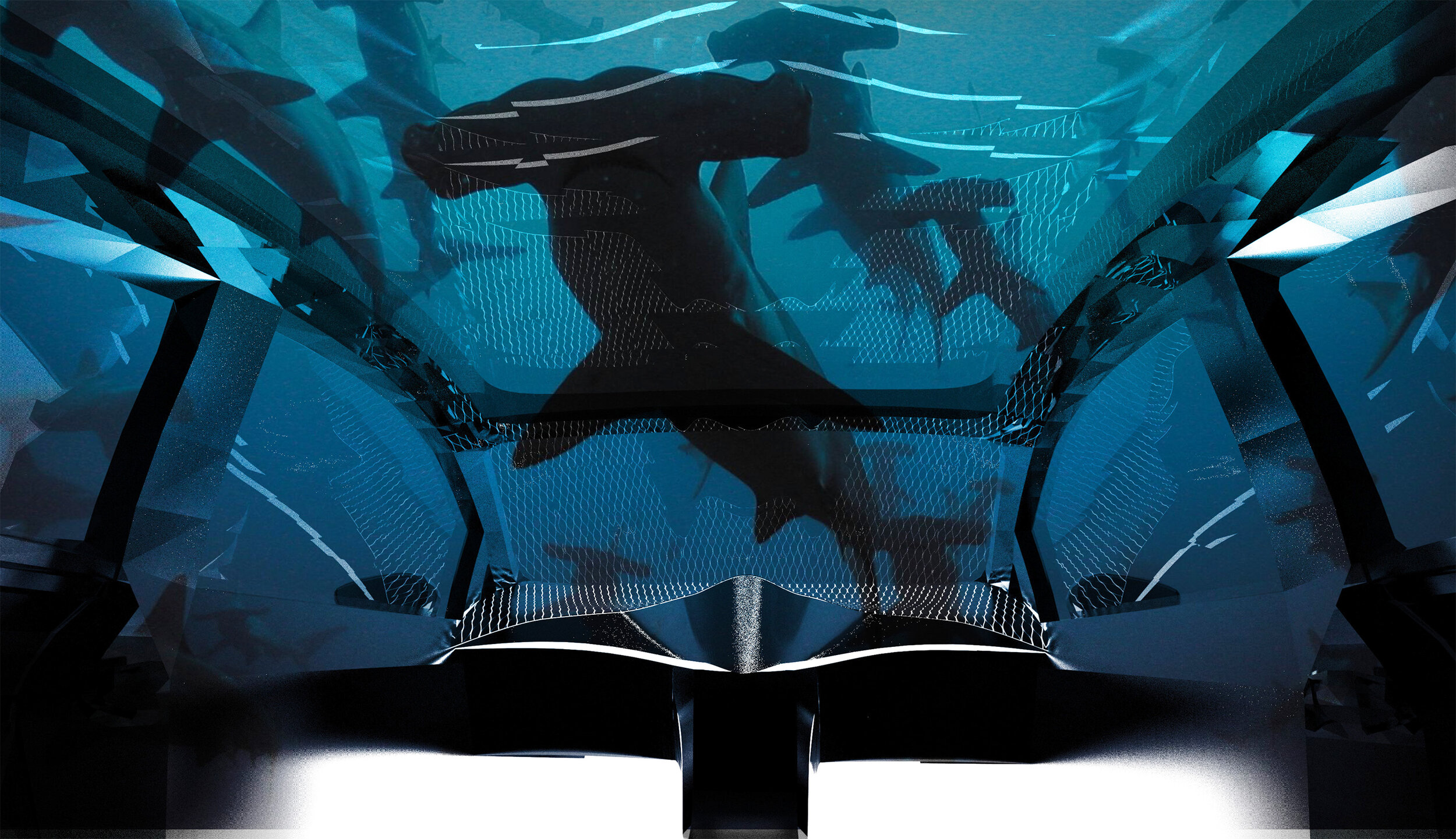 Proposal 3: Nomad (virtual reality integrated interior).
Proposal 3: Nomad (virtual reality integrated interior).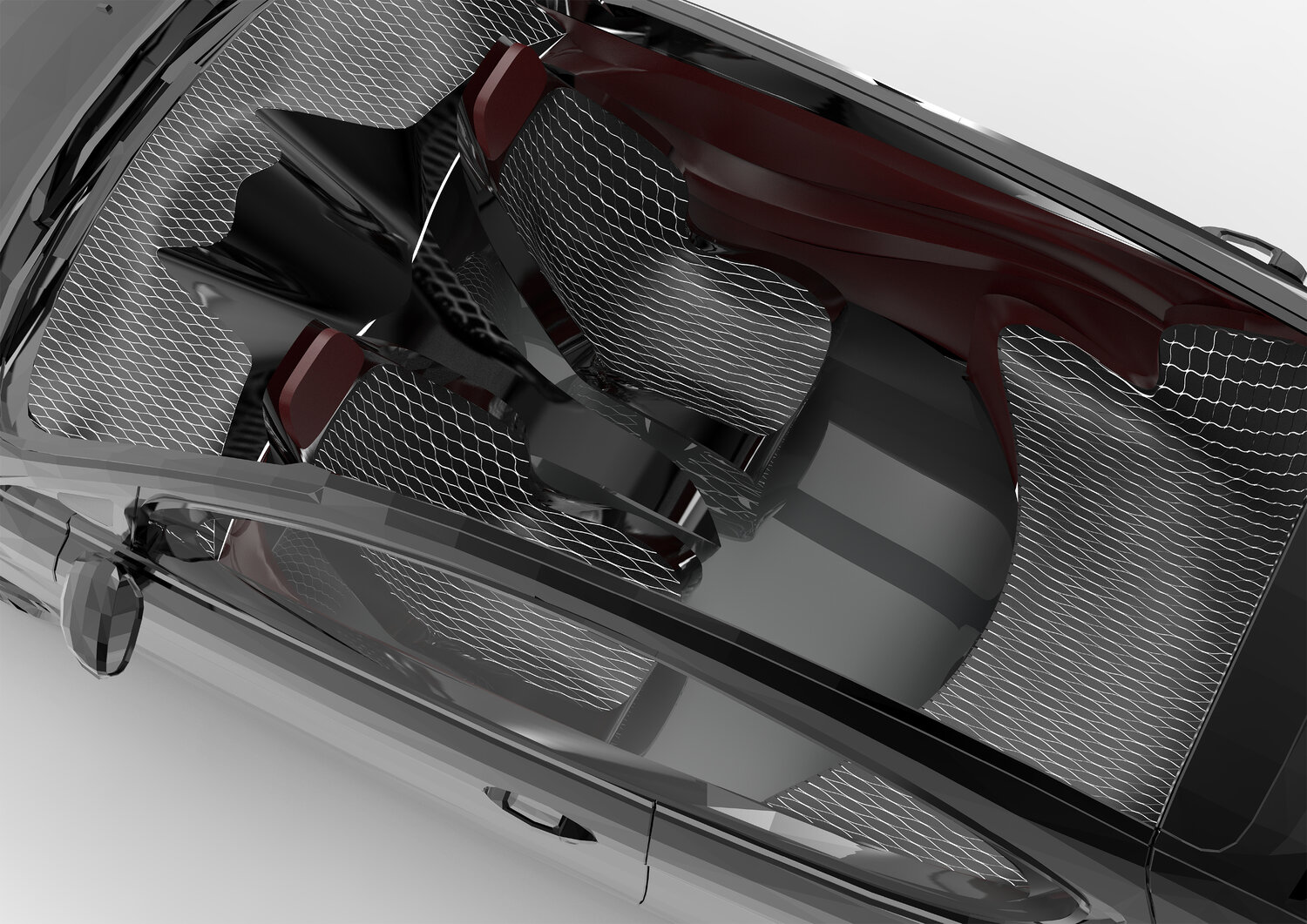 Proposal 3: Nomad (aerial view).
Proposal 3: Nomad (aerial view). Physical Experiments.
Physical Experiments. Interior Models.
Interior Models.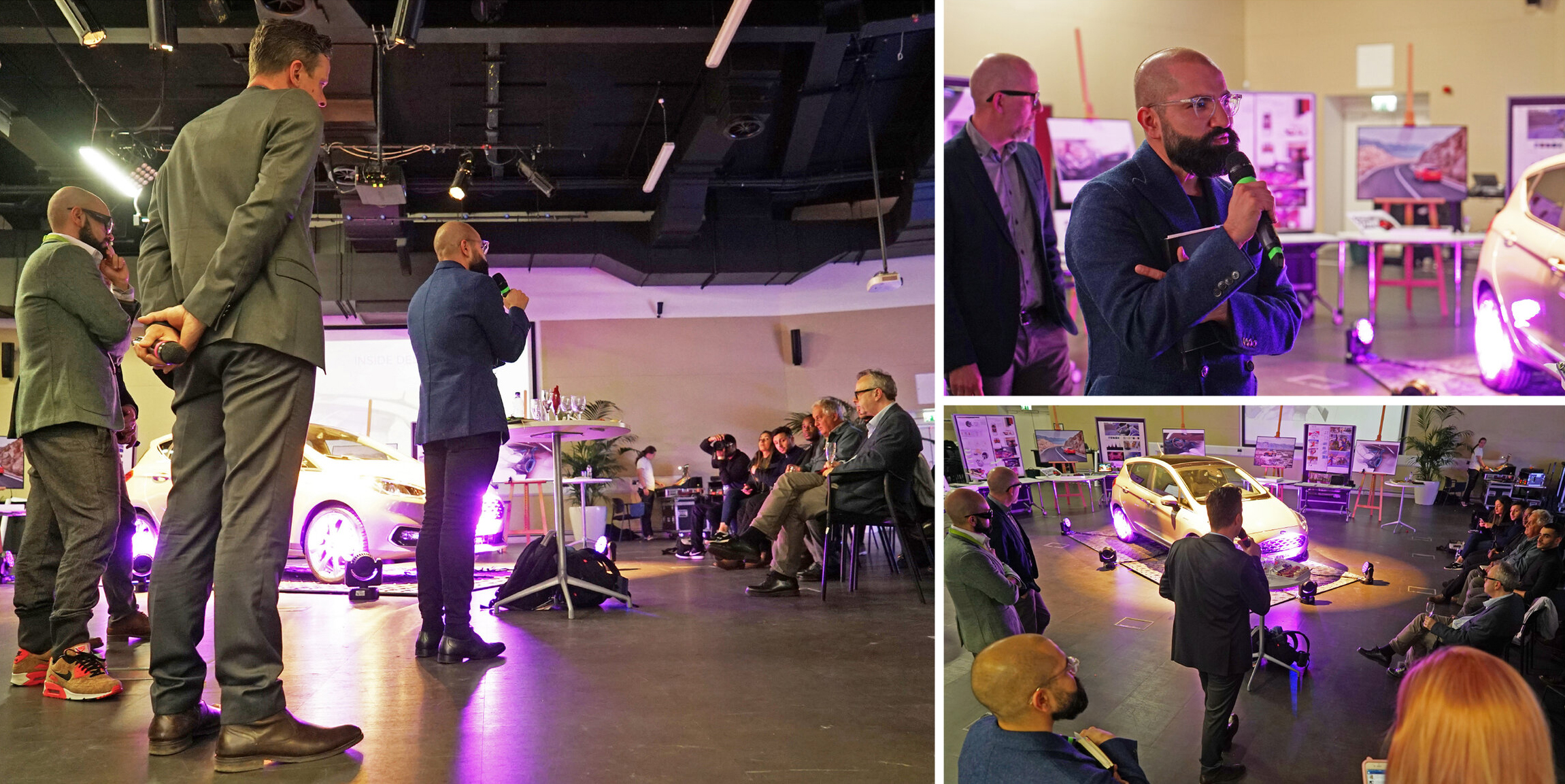 Research Exhibition & Knowledge Share.
Research Exhibition & Knowledge Share.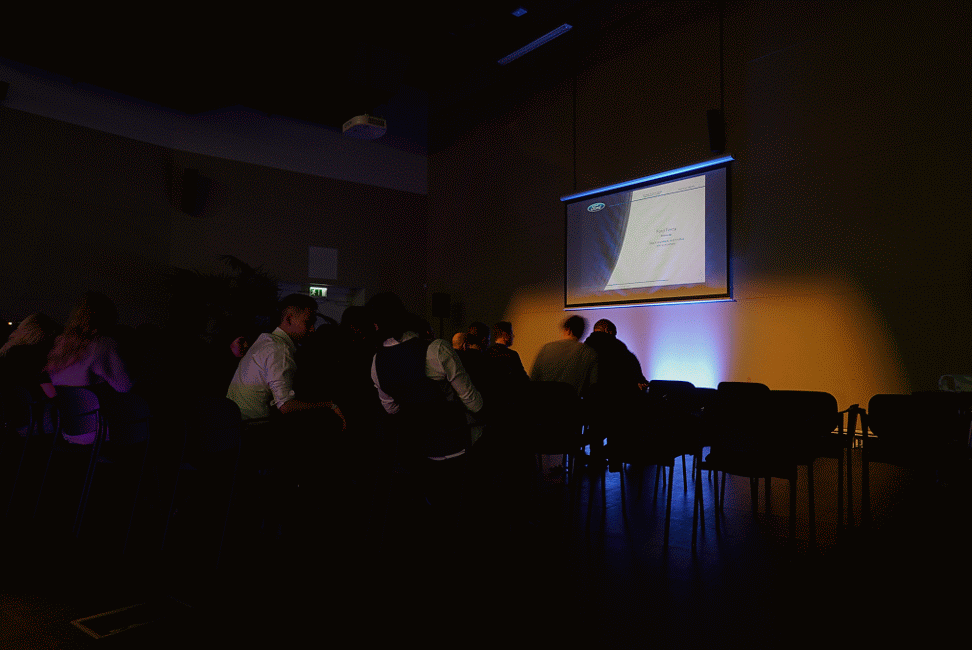
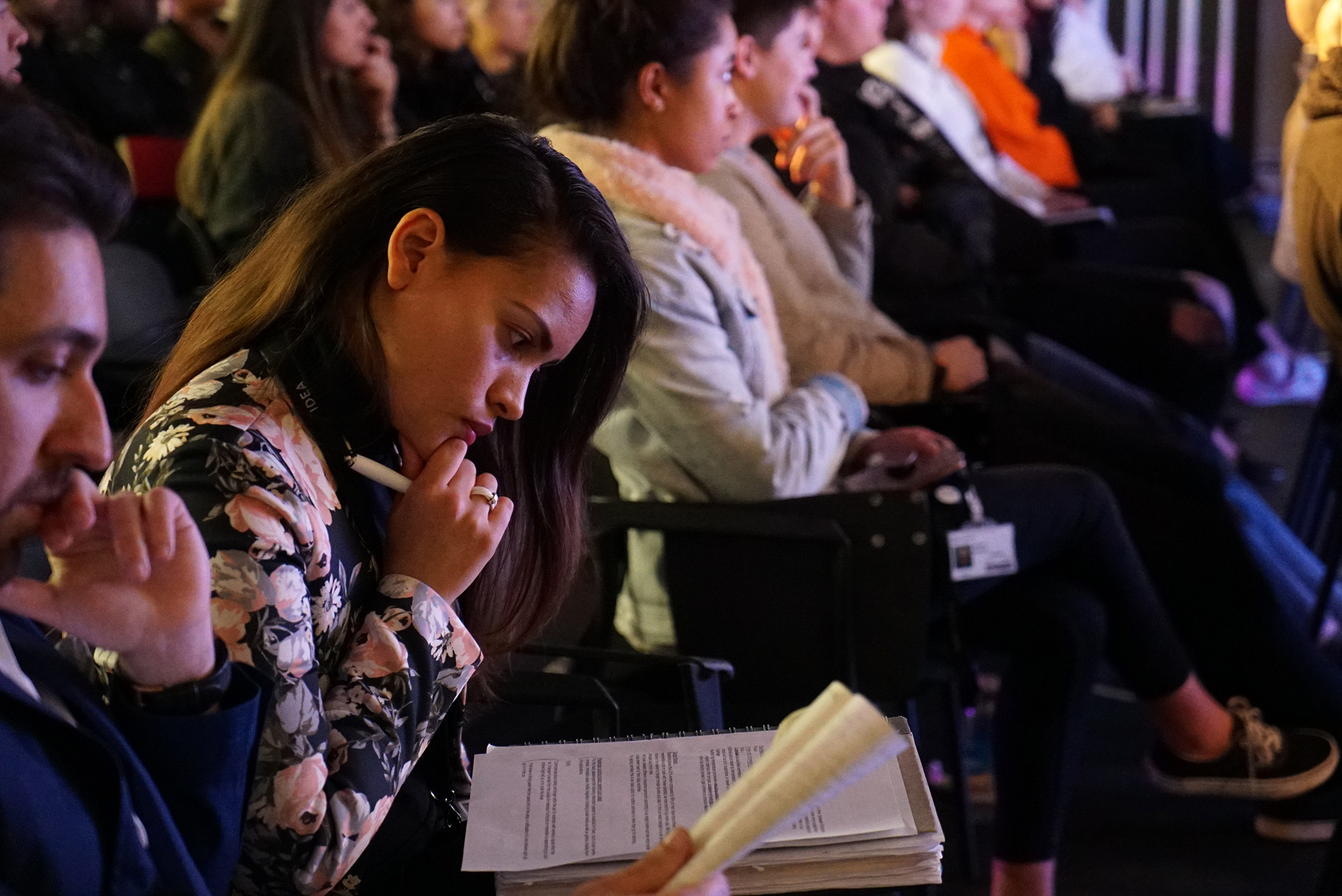
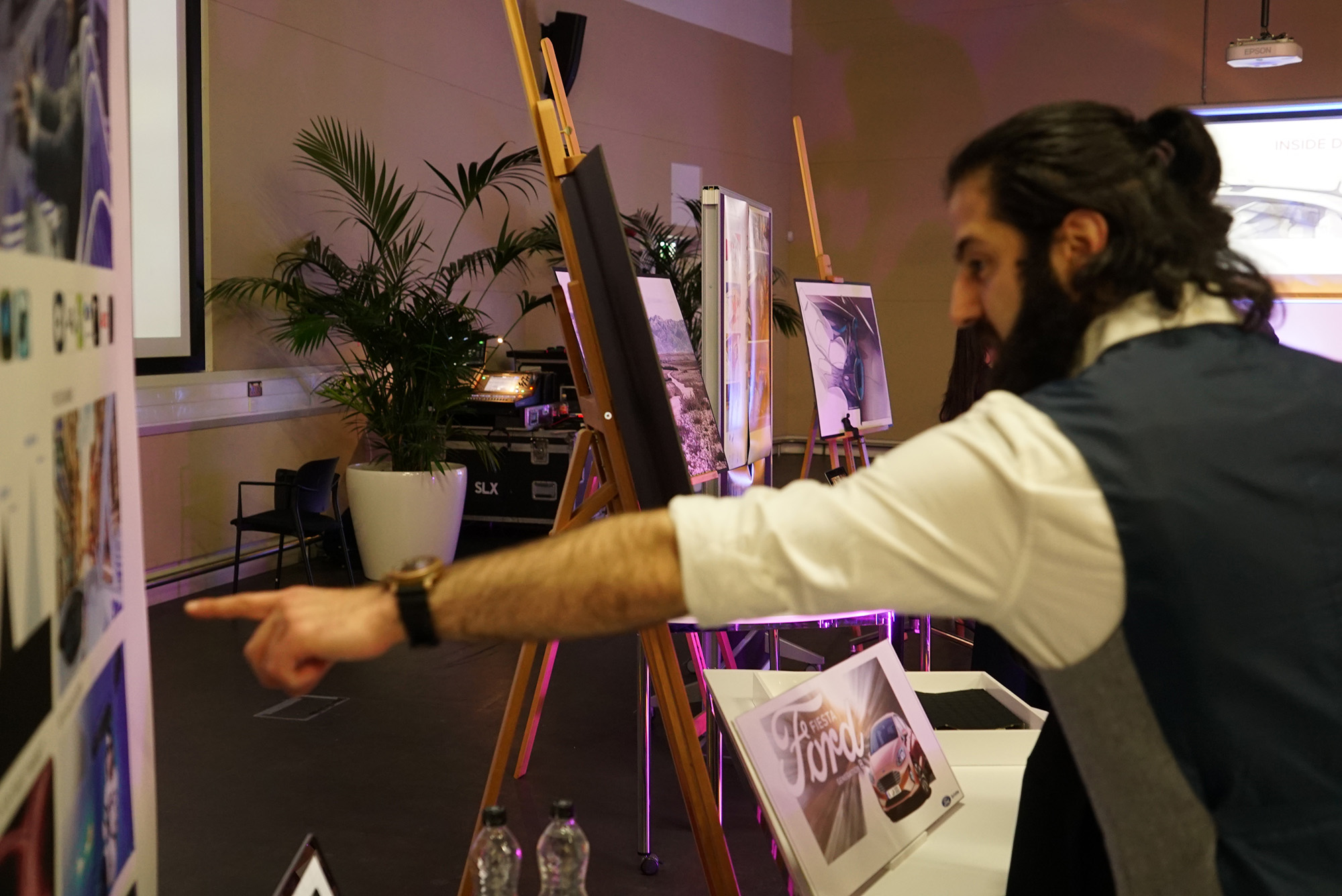
Organisation + [Credits]
Ravensbourne University London, [©Idrees Rasouli]
Role + [Team Size]
Principal Investigator, [15]
Date + [Duration of Involvement]
2017, [4 months]
Partner + [Project Location]
Ford Motors, [UK and Germany]
Status + [Project Type]
Research, [Design-led Solutions]
Brief + [Challenge]
Rethinking Ford Fiesta, [Design for Future Needs]
Collaborators [Research & Design]
Project Collaborators (Ford Motors UK and Ford Design Europe); Dies Knox (Vincenzo Damato and Meryl Le Fleur); Nomad (Shpend Pashtriku,Onur Celik and Thomas Christie); Iris (Erdi Bal, Cansu Bal, and Seniz Veli)
Collaborators [Exhibition & PR]
Ogilvy UK